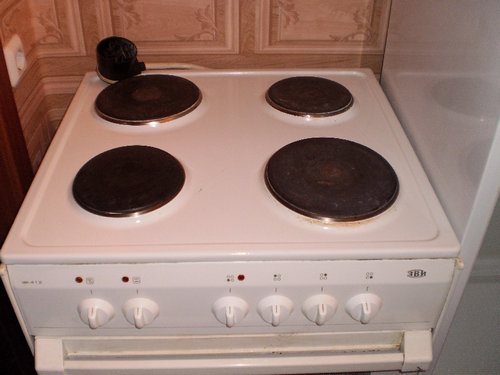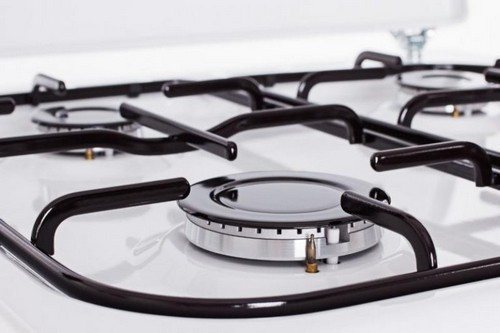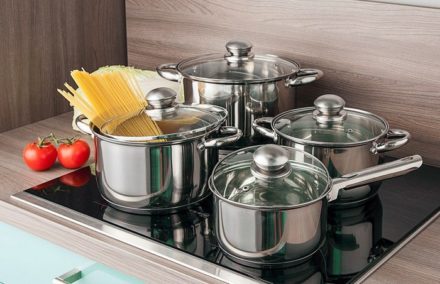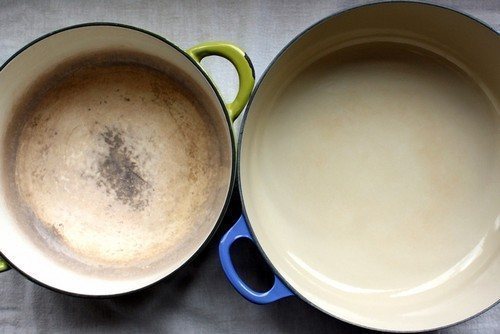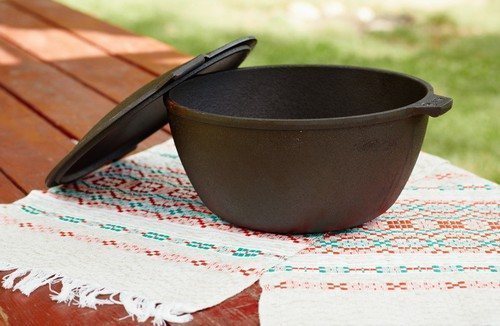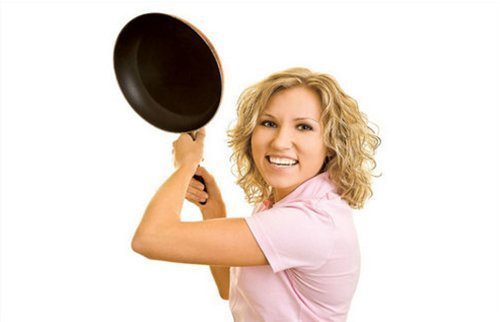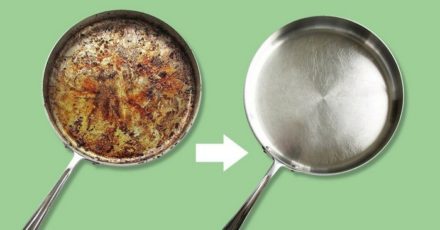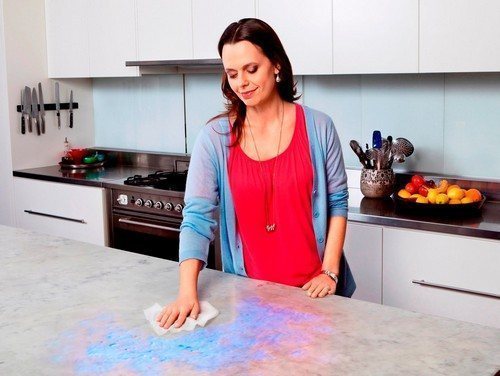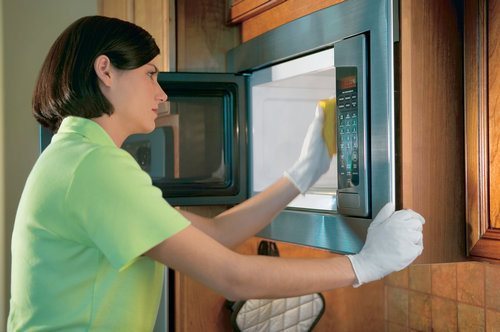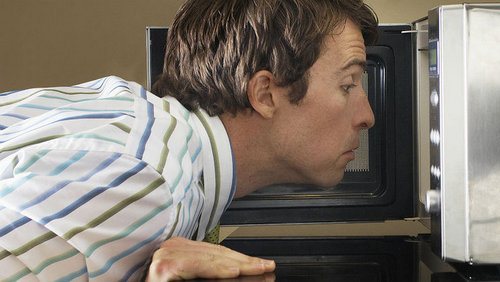Every housewife uses an oven at least once. And some even use it in cooking almost every day. Time passes and the question arises of how to clean the oven from burnt fat and carbon deposits. To prevent the oven from reaching this state, you need to wipe the surfaces with a damp cloth after each use. In this case, after a while you won’t have to rack your brains about how to wash it.
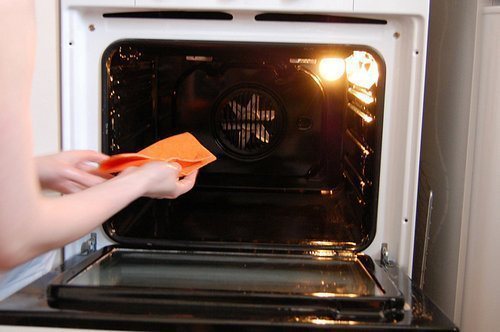
If, nevertheless, this could not be avoided and ingrained fat and soot is the number one problem, then you need to know how to eliminate it.
Cleaning the oven glass
The same amount of fat accumulates on it as on the walls of the oven. If you wipe the inner glass with a damp cloth after each use of the oven, then for general cleaning it will be enough to treat it with a special anti-grease agent just once a month.
Baking soda can help you clean the glass surface of the door easily. The entire cleaning process can be divided into several stages.
- The first thing to do is wipe the door and glass with a damp sponge.
- Sprinkle baking soda over the entire surface of the door.
- Rub well with a sponge (but not a metal one, otherwise you can damage the glass).
- Spread the baking soda over the surface of the door again and leave for an hour. During this time, all old stains will be destroyed.
- It is necessary to wipe the glass with a dampened cloth and then wipe dry.
- To ensure that the glass is perfectly clean, it is wiped using a window and mirror surface cleaner.
Removing burnt fat
It is very important to wipe down the oven immediately after cooking. The fat remaining on the walls will begin to burn over time and during each cooking an unpleasant burning smell will appear in the apartment.
There is no need to use force to remove fresh fat, as all ovens have an enameled surface. Fat that is not removed from the walls in a timely manner hardens and it is unlikely that it will be possible to get rid of it without special cleaning products. In any household chemical store you can find many products specifically designed for cleaning the oven. They all work, however, to achieve the fastest result, you must first heat the oven to 200 degrees, and when it cools down, start cleaning.
You can also remove drops of fat using ammonia. Apply it to a rag and lubricate the walls of the oven. For a greater chance of success, you can leave it for half an hour. Then the surfaces are washed several times with clean water. Do this until the smell disappears completely. If ammonia is not completely washed off, then subsequently all cooked food will smell of ammonia.
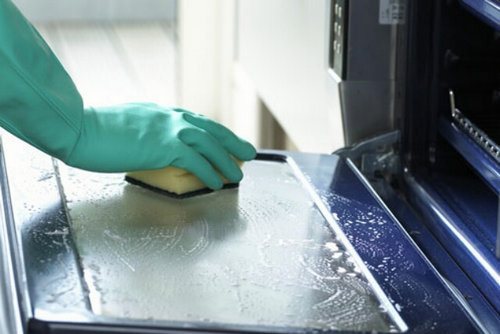
When choosing a chemical, you need to pay attention to the composition. If it contains acids, it is better to refuse the purchase, as they can damage the surface of the oven.
Cleaning products are not always labeled with instructions on how to use them correctly. Meanwhile, these rules exist.
- When working with household chemicals, you need to wear gloves so that your skin does not come into contact with caustic substances.
- Do not apply the cleaning agent directly to the oven elements. First you need to spread it on a sponge, and then wipe the surfaces of the cabinet with it.
- In order for the fat to come off the walls faster, the oven must be preheated for 15 minutes before cleaning.
- Shelves and baking trays should be cleaned in a separate container with water in which the cleaning agent has been diluted.
When working, it is important to remember that elements that heat up when the oven is turned on cannot be treated with cleaning agents!
Electrical equipment requires careful maintenance. To clean it, mix cleaning powder, a few drops of citric acid (or freshly squeezed lemon juice) and dishwashing detergent in a container.
The resulting mixture is distributed over all surfaces. Depending on the degree of contamination, the paste is left for half an hour to an hour. It is then removed using a large amount of clean water.
How to remove bad odor
Burnt food or extensive cleaning with chemicals can lead to an unpleasant odor in the oven. There are several ways to eliminate it. The easiest way is to leave the oven open overnight.
If this does not help, you can do one of the following:
- prepare a solution from activated carbon tablets diluted in clean water and boil the resulting mixture in the oven for 30 minutes;
- Lemon juice, which is used to wipe the walls of the oven, perfectly removes odor (vinegar essence gives the same effect).
Scientists have found that to completely remove cleaning product residue from an oven, you need to wipe it at least 70 times. The water needs to be changed after each wipe. It is unlikely that anyone will decide to work for such a long time. It is much easier to clean the oven without resorting to chemicals.
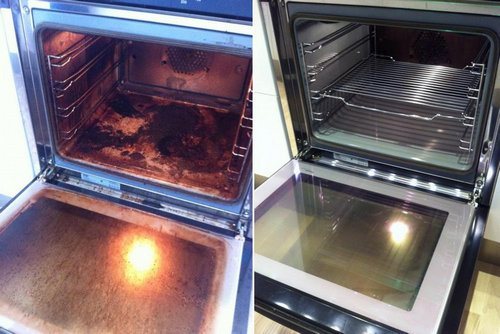
Cleaning the oven with folk remedies
Everyone knows that improvised means are much better, and sometimes much more effective, than chemicals. These "grandmother's" methods are perfect for those who cook a lot in the oven and who have children. This way you don’t have to worry about chemicals getting into your food and then into your child’s body.
Soda
This product has long been known as a surface cleaner. How to treat oven glass with it is described above. But this substance also copes with old greasy stains with a bang. The cleaning procedure is the same as for glass:
- oily surfaces are moistened with a cloth;
- soda is poured generously on them;
- after an hour, everything is washed off with clean water.
Vinegar
This product is the best way to clean the surfaces of the oven from burnt fat and return it to its original cleanliness. In addition, vinegar is good at eliminating unpleasant odors. To use it, you must remove the baking trays and racks. Wipe all surfaces with vinegar, then distribute it evenly and leave for several hours (preferably overnight). After this, all that remains is to wipe the oven.
Lemon juice
Lemon juice and citric acid do a good job of removing carbon deposits and eliminating odors. There are several ways to clean your oven using these ingredients.
The resulting freshly squeezed lemon juice is mixed with the same amount of water. Soak a rag in this solution and wipe the surfaces of the oven with it. After 40 minutes, everything is washed off with clean water.
The second method is similar, but differs in that the resulting solution is poured into a spray bottle and the surfaces are not wiped, but sprayed on them. After half an hour, wipe the oven with a dry cloth.
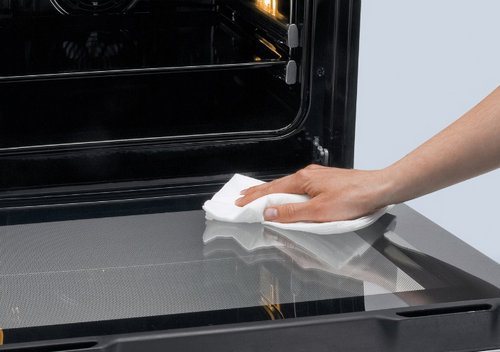
Laundry soap
This is one of the safest oven cleaners.The alkali contained in soap literally eats away burnt fat. To clean the oven in this way, you will need a piece of laundry soap that dissolves in water.
The soap solution is placed in the oven, which is heated to 110 degrees. After half an hour, the gas is turned off, the container with soapy water is removed, and all stubborn dirt is easily removed with one movement of the sponge.
After such cleaning, the surfaces of the oven are washed thoroughly. It is advisable to leave the oven open overnight so that the smell of laundry soap disappears.
Conclusion
The methods listed above allow you to clean the oven at times when it seems impossible to do so. It turns out that not only chemical agents can cope with this, but also conventional ones, which are safer and cheaper.
Excess fat must be removed while still fresh. This is necessary not only for ethical reasons, but also from a health safety point of view. When cooking, the fat left over from the last time will not be the most useful addition to the dish.
If you don’t want to deal with the issue of cleaning at all, then you can purchase special ovens that have a self-cleaning function. There are many types of such ovens: some turn fat and carbon deposits into ash, others even have a coating to which none of this sticks. True, such a technique costs a lot, but it saves nerves and effort.


